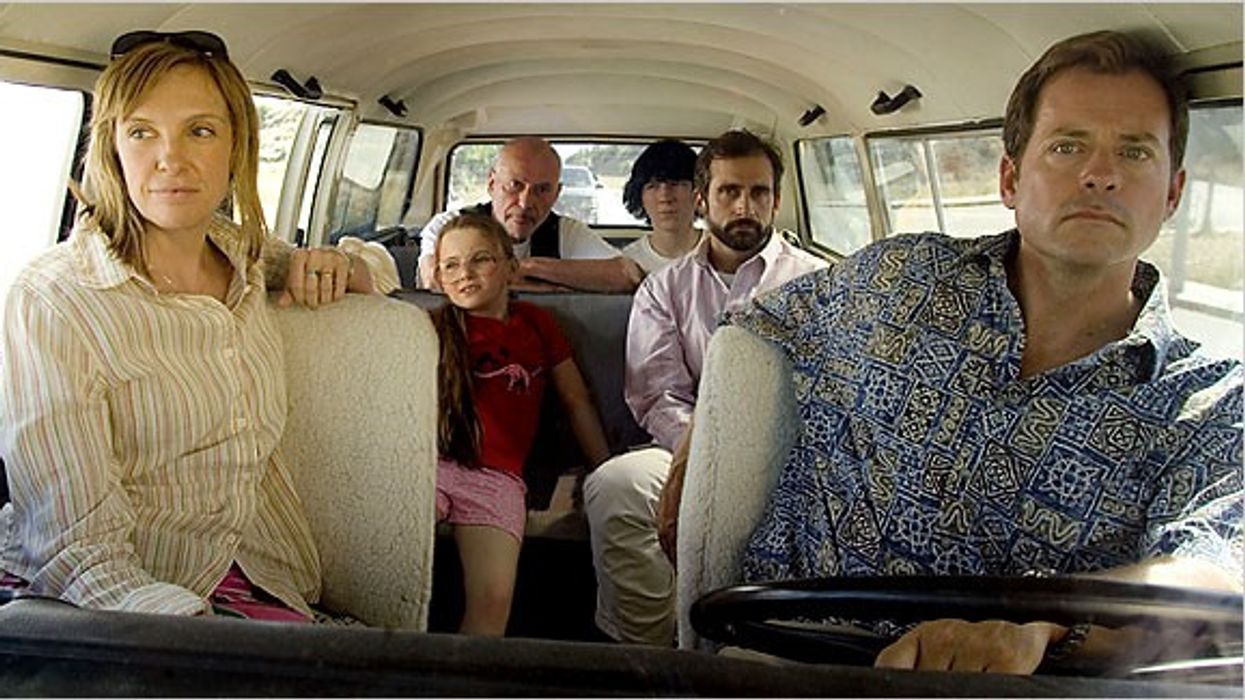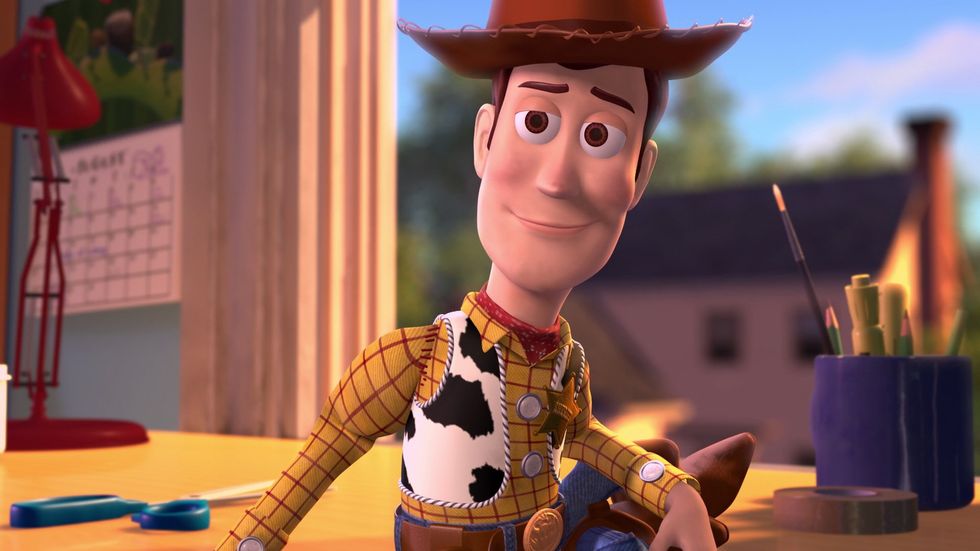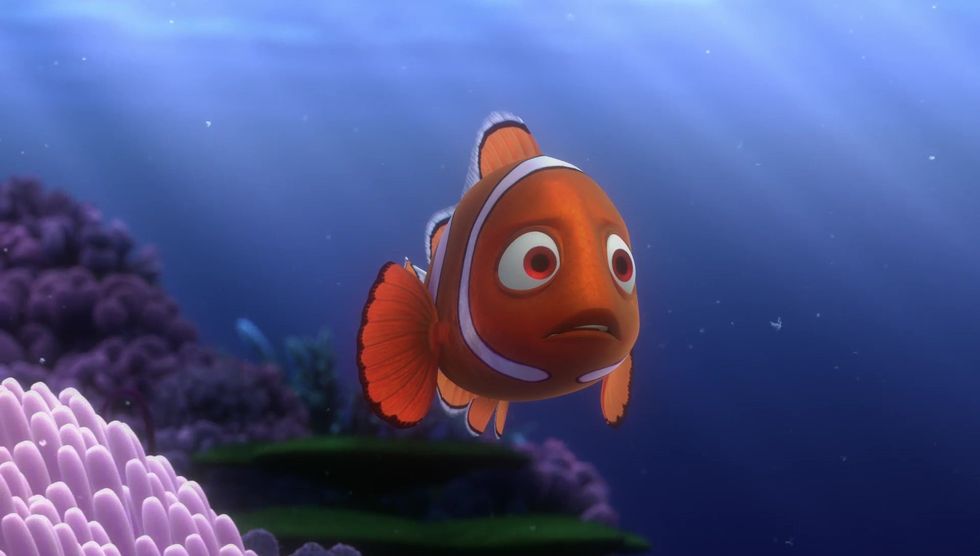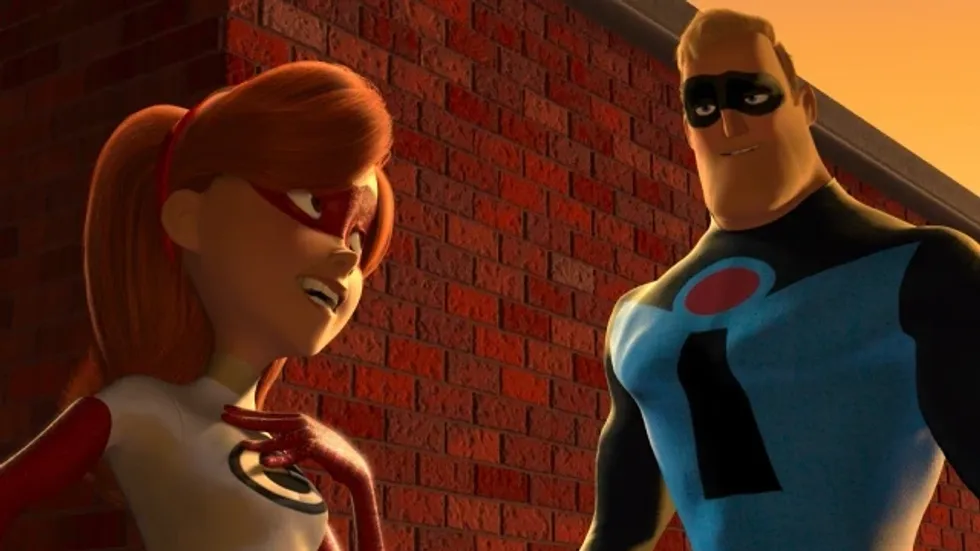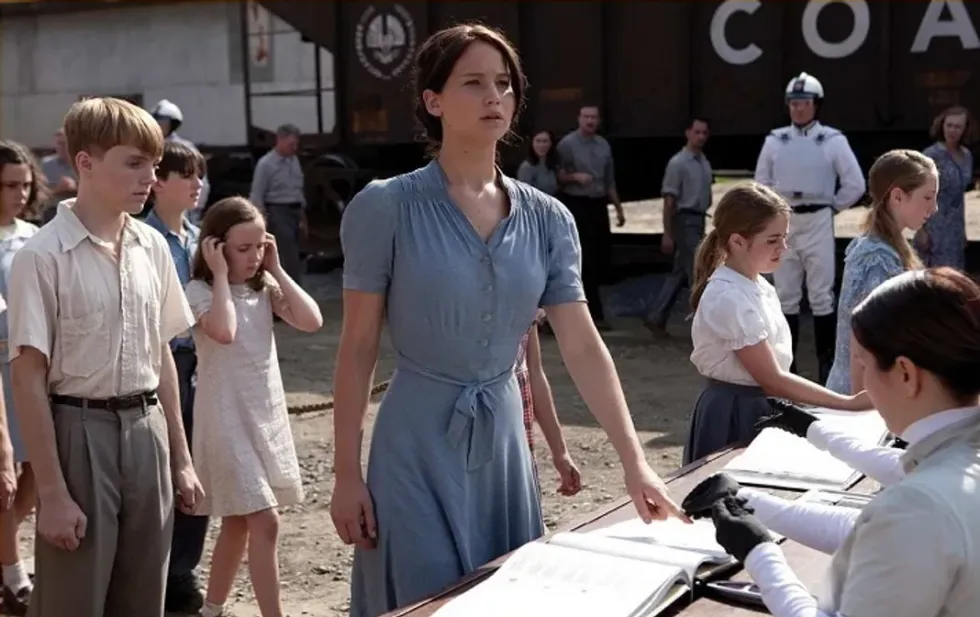'As You Are': How Two Brothers Made Their Sundance-Winning Debut on Hi-8 and Anamorphic
Miles Joris-Peyrafitte directed 'As You Are,' while his brother Joseph Mastantuono produced the rousing coming-of-age story.
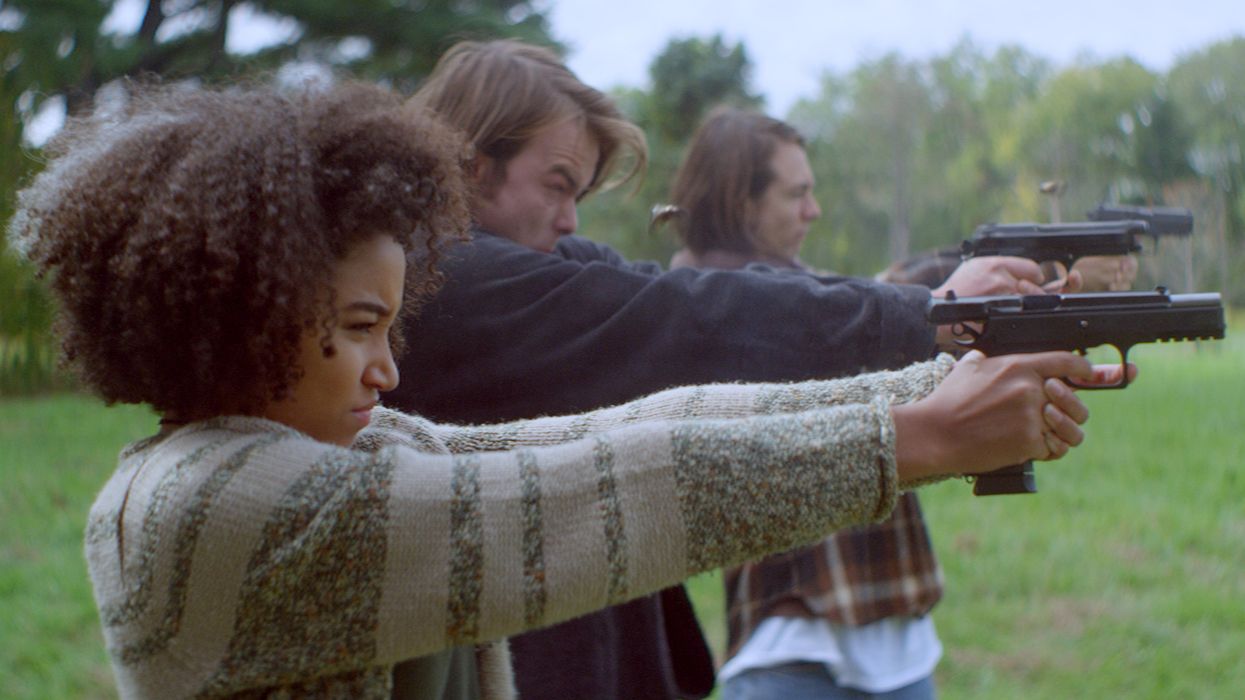
As You Are, a coming-of-age narrative set in the '90s, is one of the most highly-anticipated premieres this month. And rightly so—at this time last year, the film won Sundance 2016’s Dramatic Special Jury Award, along with the hearts of countless festival-goers.
The film explores three teenagers' relationships through the re-telling of interpersonal events during police interrogations, which are intercut with dramatic flashbacks. Think Rashomon meets Jules et Jim, but completely fresh, bewitching, raw—and a first feature to boot. Now-24-year-old Miles Joris-Peyrafitte directed the film with his 35-year-old half-brother, Joe Mastantuono, by his side as co-producer and post-production supervisor.
The result of their collaboration is both masterfully crafted and staggeringly impressive. The film's tight ensemble—Owen Campbell, Amandla Stenberg, and Charlie Heaton (since well-known for his role on Netflix’s Stranger Things) as the teenagers, and Mary Stuart Masterson and Scott Cohen as the parents—has palpable chemistry.
Think Rashomon meets Jules et Jim, but completely fresh, bewitching, raw—and a first feature to boot.
No Film School sat down with the brothers and DP Caleb Heymann to discuss creative strategies, lessons learned, and the ins and outs of the indie film world through the lens of their recent success.
Short films as training ground
Growing up together near Albany, New York, Mastantuono was a film student, while Joris-Peyrafitte was his eager assistant. So how did the little brother make the quantum leap to directing an award-winning first feature?
As You Are started off as a short film that Joris-Peyrafitte made in college. At the time, he was a student at Bard, doing independent film study with the acclaimed Korean filmmaker So Yong Kim.
"I wanted to make something beyond the usual student film—something that would propel me into more serious filmmaking,” Joris-Peyrafitte explained. "So I made a short called As A Friend, and when I told my brother Joe about it, he encouraged me to turn it into a feature."
The suggestion took hold. Joris-Peyrafitte enlisted the help of Madison Harrison, a fellow student at Bard who had acted in one of his earlier shorts. They sketched out a feature-length script in one week.
Write what you know
They set the story in Albany, a city they all knew—and filled it with people and complex feelings that held personal meaning.
Mastantuono was one of the first to read it. "When I read their script, each character was this amalgam of three different people I knew," he said. "Everyone has these people in their lives, people who have gone through these types of things. And I knew the city—it’s kind of a rough place. The whole thing was believable."
Believable was the reaction the two writers wanted. Joris-Peyrafitte was tired of films that talked down to kids and teenagers rather than empathizing on a genuine level. "That’s what we hate about most coming-of-age movies: they’re paternalistic," Mastantuono said. "They see teens as unformed. They trivialize the experience. Only a few films have done it well."

Joris-Peyrafitte began naming some of the pair's favorite coming-of-age films: "Les Quatre Cent Coups, Wild Child—"
His brother interrupted: "Zero de Conduite. And La Guerre des Boutons. We watched those films every year when we stayed with our grandparents in France."
"We liked those films because the kids had a kind of autonomy," said Joris-Peyrafitte. "They fought back when the outside world tried to constrain them."
"They weren't 'almost people,'" added Mastantuono. "They had real problems. Real feelings."
"That’s why we had to make As You Are,"said Joris-Peyrafitte. "For me, writing that script with Madison was a way of confronting my past, a way of processing feelings I still hadn’t dealt with, of exploring how those feelings actually felt. It was all so confusing back then! The feeling of being in love, the blurred lines between friendship and romance. The push-pull of male and female. Trying to figure out who we were. How to connect, how to fit in. How to satisfy society’s expectations."
"We chose anamorphic because I wanted the height and width of the frame to change. It inherently challenges what you regard as true."
He paused for a moment. "People like to pretend that those things disappear over time, but they don’t. That shit is ingrained within us."
Echoing his own childhood, Joris-Peyrafitte set the story back in the '90s, a time when the memory of Reagan still lingered and 'family values' were the rule of the day. "I thought that that era would make the film more believable," he explained. "We live inside such progressive bubbles today, we forget what it was like—and still is like in much of the world—when men were defined by 'masculinity' and women by the men they’re with. That’s a hard thing for teens, trying to define their identity. And back then it was worse."

Contrasting formats: Hi-8 and anamorphic
Their visual approach to the film evolved over time. Joris-Peyrafitte described the process. "My first idea was to do an entire movie that was only Hi-8 depositions," he said, "almost like a mockumentary, but in dramatic form. That idea came because I was interested in how this kid’s story gets manipulated and changed and how the narrative begins to break down because of the investigator’s questions. That was the first seed of the story. But then I began thinking about its potential as a feature film, since that was always my dream."
By the time Joris-Peyrafitte’s short morphed into a feature film, the two brothers had decided to film in two contrasting formats: Hi-8 and anamorphic. The squarish home video-style Hi-8 images would be used for Rashomon-style police depositions; the widescreen anamorphic images would be used for narrative flashbacks, which make up the majority of the film.
"The switch in aspect ratio was about creating a kind of collision between 'past' and 'present,'" Joris-Peyrafitte said. "We chose Hi-8 for the interrogations because it’s associated with home video and feels more truthful. We chose anamorphic because I wanted the height and width of the frame to change; it’s something I don’t see done too much, but it can have a pretty significant effect on the audience. It inherently challenges what you regard as true. That was a distinction that I thought was really important: What is true? Whom do we believe? Why do we believe it?'"
"We shot with an old Hi-8 camera from the early '90s. It was very stressful for me, especially when the old tapes began falling apart as soon as we started the capturing process."
"I wanted the heart of the film to live within the margins of that collision," Joris-Peyrafitte continued. "I knew that for some, this approach might seem too flashy, even tacky—but for me, that’s the emotional journey these characters are on. They’re trying to navigate a narrative between fact and memory."

But the choice did have a down side. Mastantuono, who took on the film’s post-production duties, had plenty of headaches. The Hi-8 was 4:3, while the Anamorphic 2:1. The masters had to be 1:85 in order to make the most of both formats. "Technically, there were a lot of hurdles involved in mixing these two formats," Mastantuono said.
Hi-8 posed such significant problems that Mastantuono tried to talk his brother out of it. "I tried to convince Miles that we should just dirty up the footage from abetter camera," Mastantuono admitted, "but he wouldn’t budge. There was something about that Hi-8 footage that was very hard to replicate. So we actually shot with an old Hi-8 camera from the early '90s. It was a very stressful process for me, especially when the old tapes began falling apart as soon as we started the capturing process."
But in spite of the headaches, the contrast works. The Hi-8 footage feels tight and confined, both physically and psychologically. The widescreen anamorphic feels like a release—or, as Joris-Peyrafitte describes it, "an exhalation."
The two brothers are proud of their work, but they’re also quick to credit the rest of their team. And with good reason.
"We hired people who knew more than we did," Joris-Peyrafitte said. "And we made sure they’d be willing to get into that zone, willing to not be sure and let people try things. We gave them ownership of their part of the job, and they bought into our larger vision."
"For better or worse, by Hollywood’s terms, As You Are is not a safe bet."
In particular, Joris-Peyrafitte relied heavily on his cinematographers. "While I was making the original short film, my DP James Seawort taught me a lot about visual storytelling. About finding a striking and emotive visual language without overpowering what was going on with the characters."
On the feature version, his DP was Caleb Heymann. "A lot of the best stuff is Caleb's," said Joris-Peyrafitte. (Heymann threw the compliment right back at him: "Your script already had some great visual ideas, long before I came along.")
The result is both tonally cohesive and cinematically stunning: sweeping overhead crane shots that capture the grandiosity of teenage memories; an out-of-focus hug seen through a misty car window. And of course, the two dueling formats.

Staying on schedule—without a shot list
As You Are was filmed at 29 different locations in 24 days. Although relatively standard for an indie film, this is, in fact, a truly tight schedule.
"Every day and every moment was so precious," Joris-Peyrafitte recalled. "We had limited funds, so it was really tough to stretch the budget."
His brother concurred: "This was a pretty ambitious movie to make for the amount of money we had. Especially because the film’s visual language was so crucial. But everyone knew that going in. There were some pretty big set pieces that simply had to work in order for the film to work, so we condensed other shoot days in order to pull off those big moments."
"Almost everything that ended up in the film is a reaction to a problem that just came out of nowhere—an unexpected solution."
"A lot of it kind of came down to intuition," Heymann said. "We wanted each shot to feel like a natural outgrowth of each location…and to fit with each characters' evolution. We kept asking ourselves: 'What is this character’s experience, whose eyes do we need to see it through, how can we help the audience feel what the character’s feeling?' We had these very clear emotional arcs to work with. We tried to enhance them visually, without leaving this heavy-handed footprint on the film."
Mastantuono chimed in: "We didn’t exactly stick to a shot list." They all laughed. "Not the AD’s favorite way of making films. But when you look back on what happened, it feels like almost everything that ended up in the film is a reaction to a problem that just came out of nowhere—an unexpected solution."
"One of my favorites is the scene in the hospital waiting room," Joris-Peyrafitte said. "Our location was a DMV, but by the time we arrived, it was clear that we only had time to dress one corner of the building. So Caleb and I came up with the idea of shooting it in one take, where the camera slowly pulled back. That way, the limited set dressing we had was revealed very slowly, building the context of the space in conjunction with the actors’ performances. It felt intentional."
"We didn’t have much time for each scene," Joris-Peyrafitte continued. "That meant that I really had to be watching what the actors instinctively brought to each moment, instead of forcing my 'vision' on them. And they brought a lot. They understood their own characters better than I did. They were them, which made my job almost like directing non-actors, in the sense that I was just trying to capture them.
Heymann nodded: this was his experience too. "We figured out where the camera should go based on what the actors were doing."

Choosing content over ratings
Improvisation can be risky, but it wasn't the team's primary concern.
"The biggest risk we took wasn’t the improv," Joris-Peyrafitte explained. "It was content. This movie was made for smart teenagers; it has content that will earn us an exclusionary rating (the film is currently unrated). Which was in part why we decided to make it. For better or worse, by Hollywood’s terms, As You Are is not a safe bet." The young director shrugged. "That said, there is an audience for this film. It’s part of a conversation that needs to be had."
Clearly, the Sundance jury agreed. But as the filmmakers predicted, despite their award-winning Sundance debut, it wasn’t easy to find a distributor. It took them a full year. After months of uncertainty and rejections, their efforts were finally rewarded: just before Sundance 2017, Amazon purchased their film.
Looking back on the experience, Mastantuono marvels at how it all came together. "I just read a quote from the great David Simon that goes, 'Best way to endure creatively is to rip out the rear-view mirrors and drive.' I agree."
Joris-Peyrafitte laughed. "Making a movie is actually a somewhat insane thing to do," he said. "It costs a lot of someone’s money. It takes a lot of time and hard work. And after the movie is made, the work isn’t over. For us, it’s only just beginning."
'As You Are' opens Friday 2/24 at the Village Cinema East in NYC and on 3/3 in LA and other select cities. You can watch it online on iTunes or Amazon in late spring.
